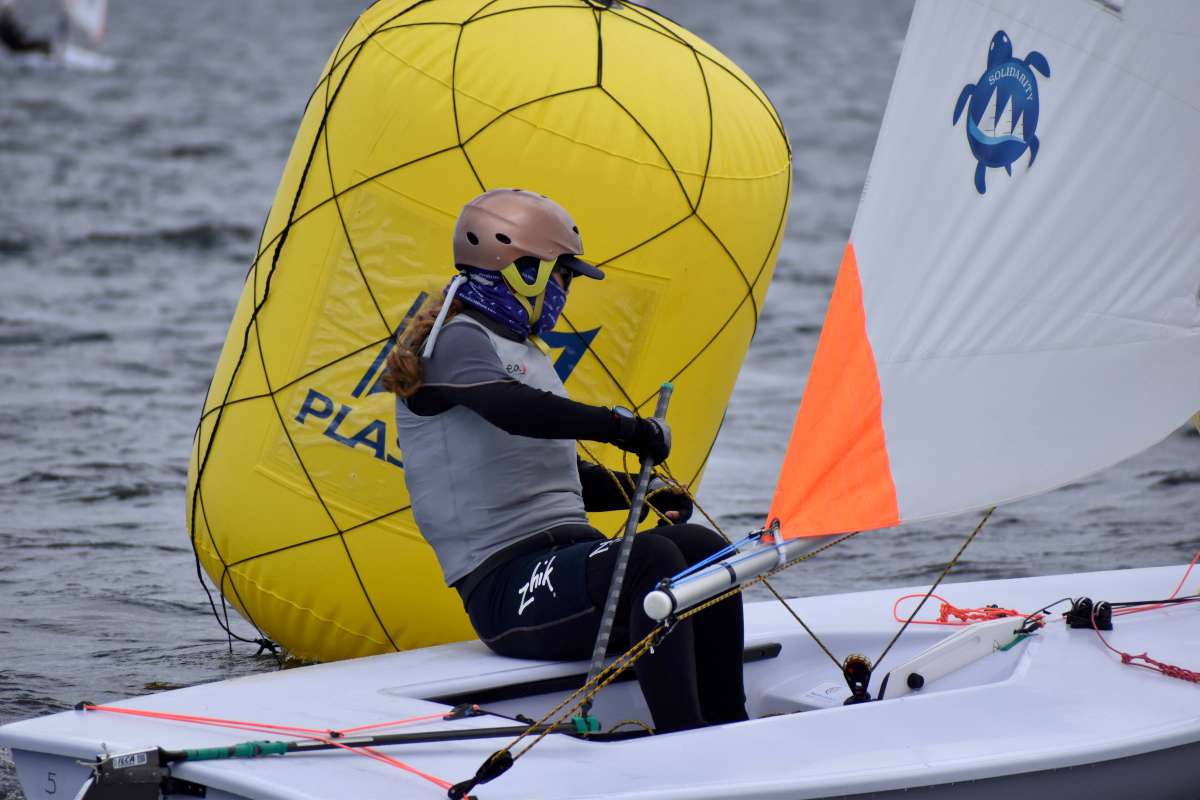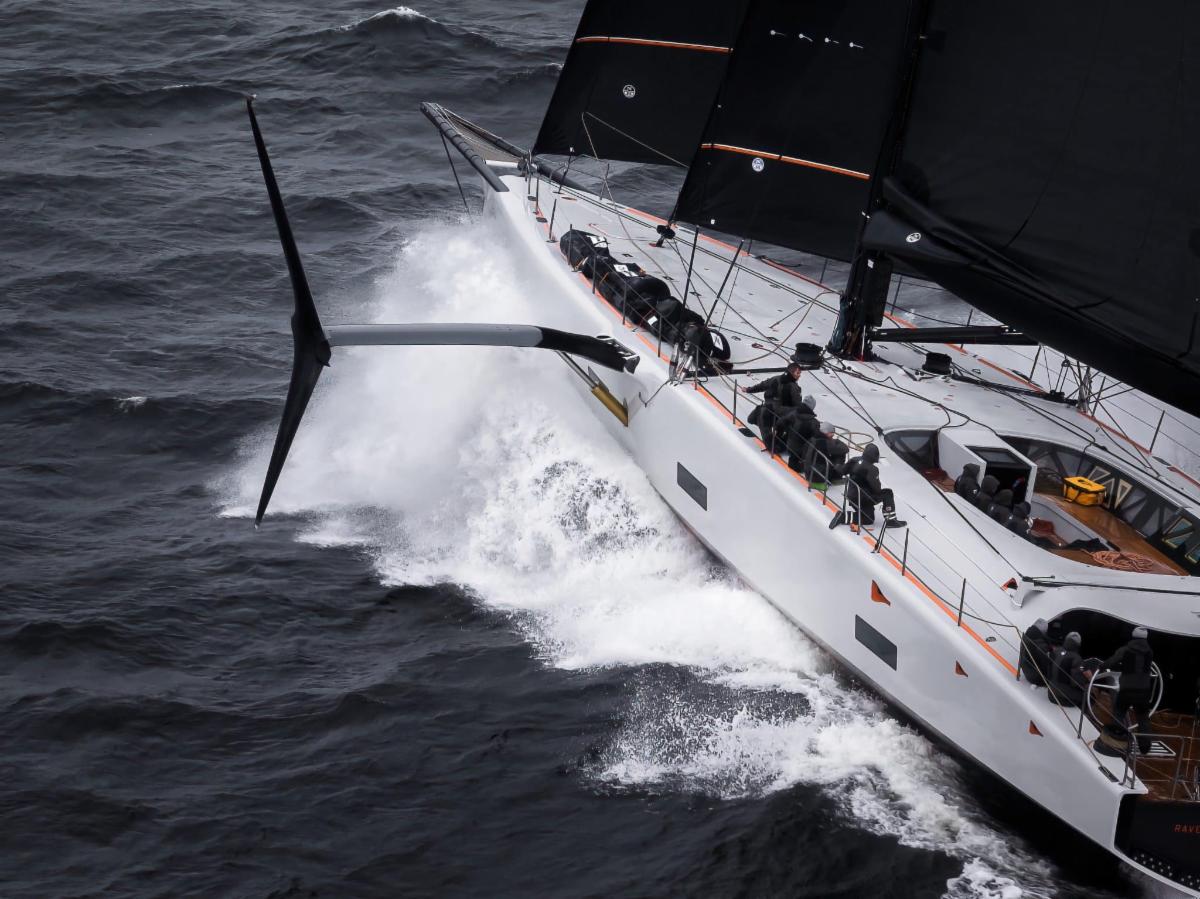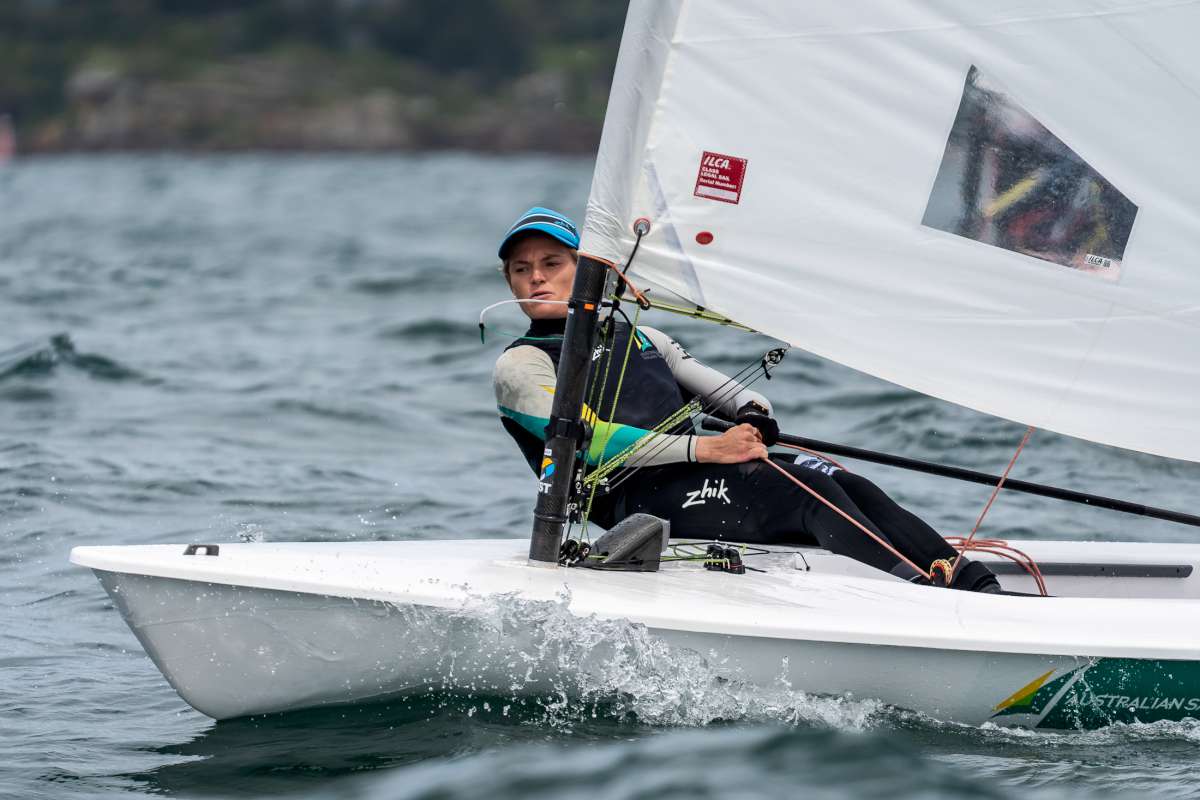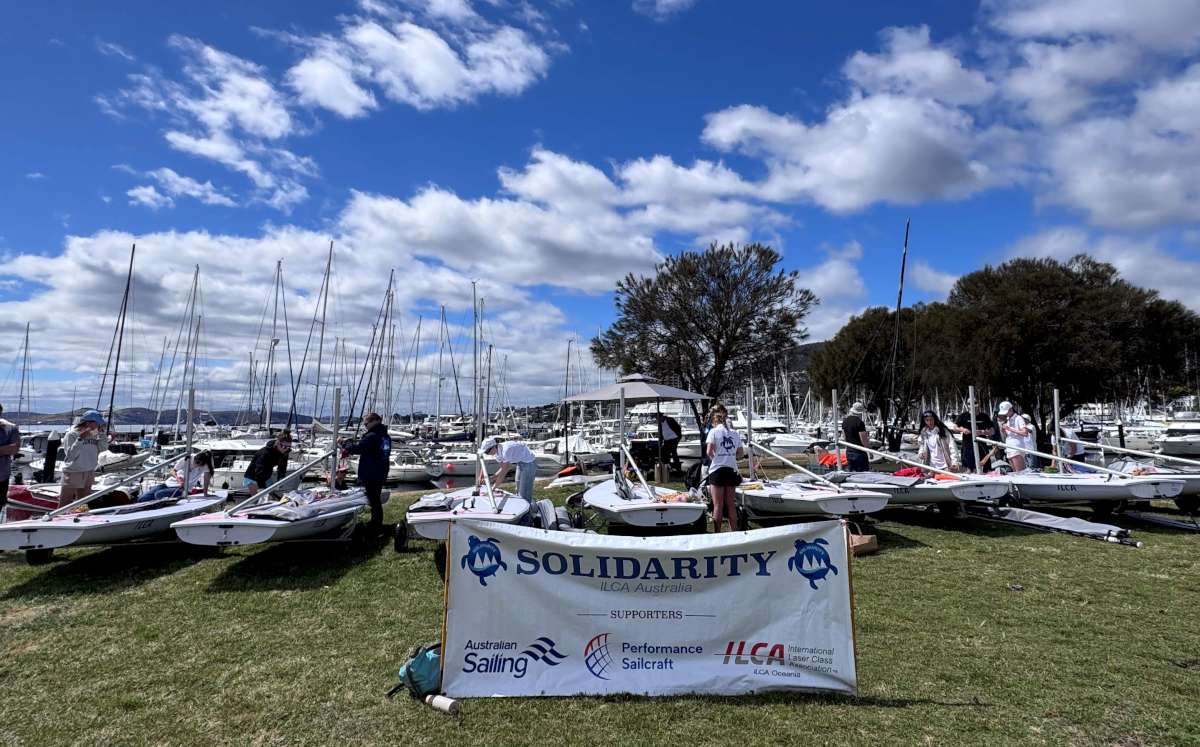The starter’s gun fired and we were off and racing from Thursday Island with the next stop Tual in the Kai Islands, Indonesia.
Well, really, there was no starter’s gun or a race for that matter but, get a group of sailing enthusiasts in the same bay at the same time heading the same way and well, it is on. Though no one will admit it.
It was mid-July and the day had dawned clear and bright and the tide was just right for an early get away out of the anchorage. The shakedown trip from Cairns to Thursday Island was behind us and now we were off on an adventure with new friends. It was the first overseas cruise for some of us.
So I had better back the story up a bit here, a lot had happened to get to this point.
We, that is the participants in the Wonderful Sail2Indonesia 2016 rally fleet had all anchored on the western side of Horn Island to keep out of the south-east trades blowing consistently at various strengths at that time of the year. The anchorage was great with plenty of room for twenty five or more boats. The water was a lovely teal colour and the fin of a white tipped reef shark could occasionally be seen moving through the boats at anchor.
A couple we had met in Cairns who regularly visit Horn and Thursday Islands told us to look out for a large resident crocodile often seen sunning himself on the Horn Island mudflats near the beached trawler at low tide. While we kept a good look out I think all the additional boats and movement scared him and he was in hiding, reassessing his situation. We were all a little disappointed we did not get to see and photograph him.
We were later told by a participant that was delayed slightly in Cairns, due to autopilot problems, that when they were anchored in the Horn Island anchorage they saw the crocodile out sunning himself on the bank daily.
The days in the anchorage before departure were spent doing the last odd jobs and topping off the fuel tanks by carting the fuel back from the local fuel merchant on Horn Island to the boat in jerry cans by tender. There is a little bay with a sandy beach where you can park the tender and just walk over the road to the fuel merchant, so we did not need to haul the cans very far. But we did need to do the job on the higher half of the tide because the bay is quite shallow and several of us were caught on a falling tide, needing then to walk our tenders loaded with fuel some distance in the shallows before we could lower the motors.
Then, the day before departure, we caught a ferry over to Thursday Island to do the last of the provisioning along with a trip to Customs to finalise our departure. Then it was off to the pub for a great counter meal at lunchtime.
We finished off the day with a trip to the local grocery store for the cold goods and then on to the hardware store to get a couple of seals for the sink wastes that I had destroyed by being a little over active while plunging a small blockage.
We were all set and excited as we prepared the last meal we were going to have at anchor in Australian waters for quite some time. I checked the Bureau of Meterology’s weather forecasts and GRIB files I had recently downloaded from Saildocs via SailMail over the HF radio. It all looked good for departure the next day.
The weather forecast mentioned a strong wind warning in the west side of the gulf, but we did not see any problems on our intended course. Heck, we had been tracking the weather for the last month and this looked the best for sailing we had seen in that time. The GRIB files showed SE 12 knots to 15 knots for the next week.
As I mentioned earlier, the day dawned clear and bright and the tide was just right for an early get away. While there are a few hazards getting out of the Thursday Island area, the hazards are well marked on the charts and navigation is not a problem.
The one thing you do need to keep an eye out for is shipping traffic, there are some very large vessels moving through these waters. Due to the shallow water depths they do not have a lot of manoeuvring space, so give them a wide berth.
We motored for the first hour to top up the batteries and make water to fill the tanks. The planned tank top-up was working well until the freshwater pressure hose burst. I saw the bilge pump run light come on in the cockpit control panel however, before we were quick enough to access what was happening: we had lost one hundred litres of fresh water into the bilge.
I thought “great, we are not off to a good start” and I hoped this was the last of any problems.
The wind started to pick up and before long we were able to turn off the motor and, as luck would have it, at about the same time the tide had fully turned and we were off sailing along at a nice steady seven knots.
It was not long before the alarm clock we had set up went off to remind us the HF net was about to start. While we had enjoyed our lunch at the pub the previous day, several crews were talking together and had made arrangement to form an HF net while we travelled. The word went out to the rest of the fleet by word of mouth and, on the first roll call, almost seventy per cent of the fleet were on the air.
I am sure more were listening but were not comfortable to say much due to the language barrier. This was also when some of the fleet realised their HF radios did not work or didn’t work on all the frequencies. While an HF net may sound a little old fashioned to some, we had a great time keeping in touch with the fleet and hearing how things were going either good or bad. Fishing activities were usually discussed during the course of the net and of course waypoints taken and plotted of the upcoming dangers.
It was not long after the first HF net was over the crew member we had picked up in Thursday Island started to look a little green around the gills. Hoping this was something that was going to pass, we had her take some seasick pills and moved her out into the cockpit for some fresh air.
As it turned out it took three days at sea before she came good, but that ‘good’ could quickly revert to ‘bad’ if the sea became a little lively. We did have a small full-time job on our hands making sure our crew was staying hydrated and was kept as comfortable as possible.
On the other hand Matilda was loving the conditions, she took off like a horse just released from the starters barrier. In the first two days we were logging nearly one hundred and eighty miles a day. This was moving us into the forward part of the pack, we were most impressed with her performance; not bad considering she was sitting well down in the water with several months of supplies packed on board. Along with spare parts and an additional forty metres of anchor chain combined with the full fuel and water tanks and additional jerry cans of water and fuel we were fairly well loaded.
We settled into a three hour on/three hour off rotation for the first two nights but found the three hours to be too long. With our crew too sick the first two days we then decided to do two on/two off and slipped into it easily and only needed a small catch up sleep during the day.
We were thankful to have the extra set of eyes when we were going through the squid boats on the fourth evening. But life at sea does appear to get better after the third day.
It is amazing how quickly you slip off to sleep when you come off shift and lie down into the bunk. I also think getting the boat as quiet as you possibly can downstairs helps, you automatically know something needs investigation when you start to hear a noise. Usually the first night is spent looking for that rattling bottle in the back of the cupboard or the intermittent ting ting coming from the aft cabin. Once these annoyances are sorted out life becomes a little easier.
As it turned out the strong wind in the western part of the Gulf of Carpentaria did have effect on the weather we were experiencing in the east part of the Gulf, but I do not believe it was a bad thing.
It appears the mono’s were revelling in the conditions and were leading the pack. The wind was a little stronger and the seas were a little bigger, well OK, double what was forecast.
As it turned out, we were getting a steady 20kn to 25kn and were almost on a beam reach, sailing along at seven to nine knots some of the time. I remember looking at the GPS trip log and saw we were averaging 7.5kn moving speed for the trip and thinking we are moving along quite nicely.
Our course was due west at 270 degrees magnetic. While we could have made a more direct route to the Kai Islands, warnings from the previous year’s rally fleet about fish attracting devices and nets closer in toward Irian Jaya made us cautious so we stayed offshore fifty miles.
While this additional distance seemed frustrating the good news is we did not have any encounters with any fishing activity during our first four days. We knew the fishing and squid boats were out there in the distance closer to the coast because we were able to see the lights on or the glow over the horizon.
Once we had past the southerly tip of Irian Jaya we turned and headed for the bottom of the Kai islands. Unfortunately, this was about the time the wind started to wane when we really could have done with a lift. We found ourselves doing extra miles keeping the boat moving as we sailed zigzag downwind during the evenings. The wind continued to blow from the SE, but at a very sedate ten to twelve knots.
The good thing is we had become reasonably proficient at using our cruising spinnaker and most days found that it was being hoisted at about the same time the sun was starting to come up over the horizon. We would have dearly liked to have run under spinnaker at night but common sense dictated that we could not see any squalls or approaching storms in the darkness. While it is one thing to pull the spinnaker down shorthanded in the daylight, it’s certainly not something that would be safe to do at night.
We were still making reasonable progress, but then during the evening of the fourth night we ran into the squid boat fleet. Well, we did not run into them as such, but had to negotiate the fleet fishing around the southern end of the Aru Islands. There appeared to be hundreds of squid boats spread out over the horizon as far as the eye could see.
The problem with squid boats is the dozens of exceptionally bright white lights they carry, making them almost impossible to look at being particularly bright and nasty when looking through the binoculars for navigation lights. We gave up on looking for navigation lights because they do not appear to have any navigation lights as we know them. Most only have some flashing LED lights but they pale into insignificance with the power of the squid-attracting white light.
So, from time to time, we would put our sunglasses on at night when negotiating in close quarters, this allowed us to keep a better eye on the boats movements. We concentrated on looking for direction of travel, unfortunately this meant looking through the binoculars to find which way they were pointing.
Luckily only one or two boats were on the move at any one time, the rest were either on anchor or adrift. So, once we had identified who was moving, we could keep track of them until we, or they, were out of range.
The radar was not helping us locate or track these wooden boats and most of the time the returns were so poor we found it easier to be on high alert with two sets of eyes in the cockpit. The good thing about squid boats, if there is a good thing, is squid boats do not have nets so there were no nasty surprises to find wrapped around the rudder or keel.
Moving through the squid boat fleet was when I got the biggest scare of the whole trip. Just after we had finished negotiating around a large boat that was on the move and we were just in the clear, the lifebuoy light attached to the stern rail malfunctioned and started to flash brightly. At that point I thought we were about to be run down and my heart almost flew out of my chest, then I realised what was happening.
So far during the trip the wind generator and solar panels had kept the batteries well charged and we had not needed to run to motor to top up the batteries even though the instruments and autopilot was on twenty four hours a day. The only thing we were not totally happy with was the fridge as it continued to run and run. Not sure what was going on but it appears the controller locks up from time to time so the fridge would run but does not get any cooler. Hope to have this sorted out in the near future but it only appears to do it during passages which makes troubleshooting difficult.
Kai ho!
Once we had cleared the bottom end of the Aru Islands the wind shifted slightly, making a run to the channel between the Kai Islands a difficult task to achieve. The swell was up and kept knocking the wind out of the spinnaker and the mainsail so that was painful.
As it turned out we dropped the sails and motored for a couple of hours, then as luck would have it we got a reprieve and the wind livened up and we were off sailing again. It was great to see the Kai Islands appear out of the sea mist and we were having a great sail.
There was a long discussion on the HF net on whether it was safe to journey up the channel between the islands in the night. The previous evening one of the catamarans had motorsailed into a fishing net when they cut in close to the shore when going into the channel. We had their GPS coordinates and had entered them in as a waypoint and knew it was something to keep well away from.
Some of the fleet behind us had decided to hove too and not go up the channel unless it was daylight hours. In light of the sloppy conditions I think our crew would have jumped over the side if we had decided to hove too, because her sea sickness had returned.
It was not dark but it would be before we had fully traversed the channel. We decided to push ahead but we did not make the decision to continue blindly. While we did have the welfare of our crew member in mind, it was not the only reason for the decision.
It was a full moon and the sky was clearing and we were also in contact with one of the fleet who had been ahead and were still in the process of travelling up the pass and would be through before dark. I had been following their progress by tracking the AIS and communicating with them on the VHF.
Into the channel we went and, while we had looked at this passage on the chart time and time again when planning the trip, it never ceases to amaze me how big and just how beautiful things are in the real world when you are not looking at a paper chart or zoomed out on the chartplotter.
We had an easy sail into the passage and after several miles the breeze died off so we had to douse the spinnaker and started the engine but, being the eternal optimists we are, we left the main up. After several more miles, night was beginning to fall as we prepared the powerful handheld spotlight should it be needed to put light on the upcoming hazards
Armed with several co-ordinates entered as waypoints we were able to run up the passage in the dark reasonably confident
there were no fishing huts or fish attracting devices. One of the bigger cats had caught up and followed close behind, it was good to know they were there should we need any help if we get into trouble.
It turned out to be an easy run with the full moon lighting the way, the only fishing activity we saw was when we turned into the shipping passage to run into Tual from the north. There were several boats out and about with nets between them and the shore but the boats were lit with flashing LED strobes and they were out of the main channel.
Upon our arrival at the anchorage one of the participants had heard we were coming in over the radio and had stayed up to give us advice on the best place to anchor. If he had not stayed up and came over in his tender to give us the lay of the land, we more than likely would have dropped anchor in deeper water near the jetty that housed the soon to return fishing fleet.
With his good advice we dropped the anchor in sixteen metres of water in the anchorage north of the main port of Tual at 02:30am and, after a quick tidy up, we hoisted the Q flag and went to bed after a few celebratory drinks excited but exhausted.
At some ridiculously early time in the morning the rooster close on shore began to crow and woke us up. This was then soon followed by the smell of small cooking fires as the town of Tual woke up to start the new day. We lay in bed excited yelling between our selves guess where we are? Not really believing we had just crossed a small sea and were in another country, how exciting.
The next few hours was a blur as Quarantine, then immigration came and went, it was a painless experience I think made easier because all of our paperwork had been submitted electronically a month earlier. The thing that does stick in my mind is that we were made to feel most welcome and it was smiles alround. Our Q flag was lowered and our Indonesian courtesy flag was flown. Then, later in the day, Customs was able to visit and we were free to go to shore.
Woooohooo! We were now free to explore Indonesia.
Some of the things we learnt
Keeping offshore, to stay away from fishing activity, worked well for us on our journey.
On our way to Tual we did not see any FADs until we got in the channel between the islands. So keeping to the centre of a channel or in deeper water can help, but it does require a good look out with a high powered spotlight or torch regularly flashing it around to spot any upcoming hazards.
During our run up between the islands we kept on the two hundred metre contour and had a good run. We found a number of fishing huts are manned at night and, when we approached, someone would shine a powerful torch in our direction to get our attention then flash the beam across the water over their net so we could steer away if necessary. Most of the time the nets would be laid from the platform/canoe/dinghy/fishing boat to the shore and to make the end of the net float a little less visible to us they fly a black fag on the bamboo pole float.
Taking on a crewmember just before the start of an ocean passage was not the smartest thing we could have done. While we have sailed together it was only short runs. If contemplating long voyages have the candidate travel with you for a coastal leg to get sea legs.
For us three hours on and three hours off during the evening was almost torture, once we went to two on and two off it went by in a flash and we seemed in better condition in the mornings.
The tide function on electronic charting application programs) can be out by hours; while the app is showing it is a rising tide, in actual fact it may very well be a falling tide. Try and find a tide book or reference before moving into areas you need tidal information.
While I know some people think the AIS transponder is a pain in the neck I know from experience they have aided rescue or helped keep people out of trouble. The first was when a catamaran was moving through the Barrier Reef area and a ship contacted them by name and let them know they must take evasive action now or they would be run down. They took evasive action and were able to power out of the ship’s way quickly.
Also, when moving through the Barrier Reef area, an EPIRB had been activated and through the aid of AIS, the Reef VTS was able to contact the two closest boats to the activated beacon. That was ourselves and another of the rally boats. The other boat was slightly closer and were able to find the distressed boat and tow them to safety.
Another time was when I was tracking one of the rally fleet through the passage between the Kai Islands. I was watching the progress on AIS as they negotiated the passage. I had called them on the VHF to let them know they were sailing into danger. There were rocks and shoals ahead and they were making seven knots, so I called to let them know my chart shows they were sailing into the trouble. It turned out they were using an older chartplotter chip which did not have the shoals marked; but the newer chip, in the chartplotter downstairs, showed the shoals clearly. ≈
Bruce Nicholson


























